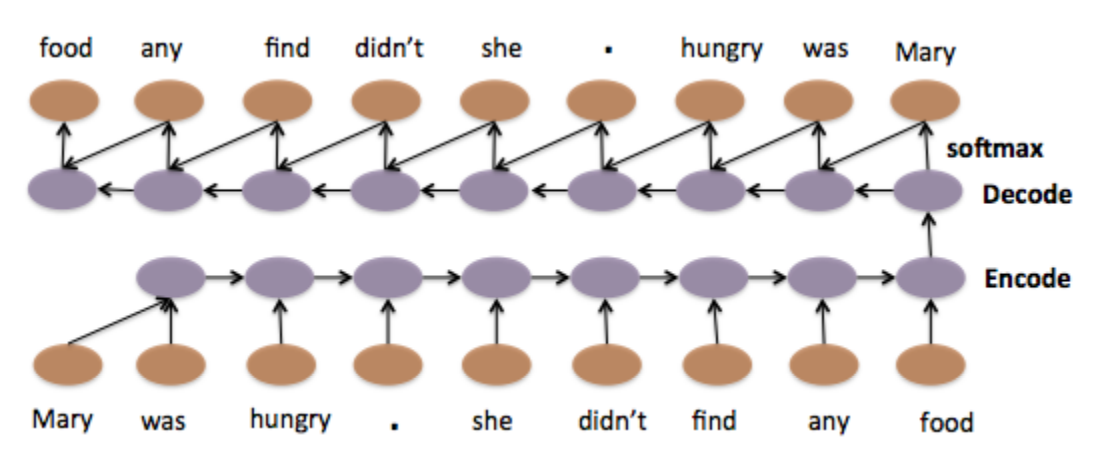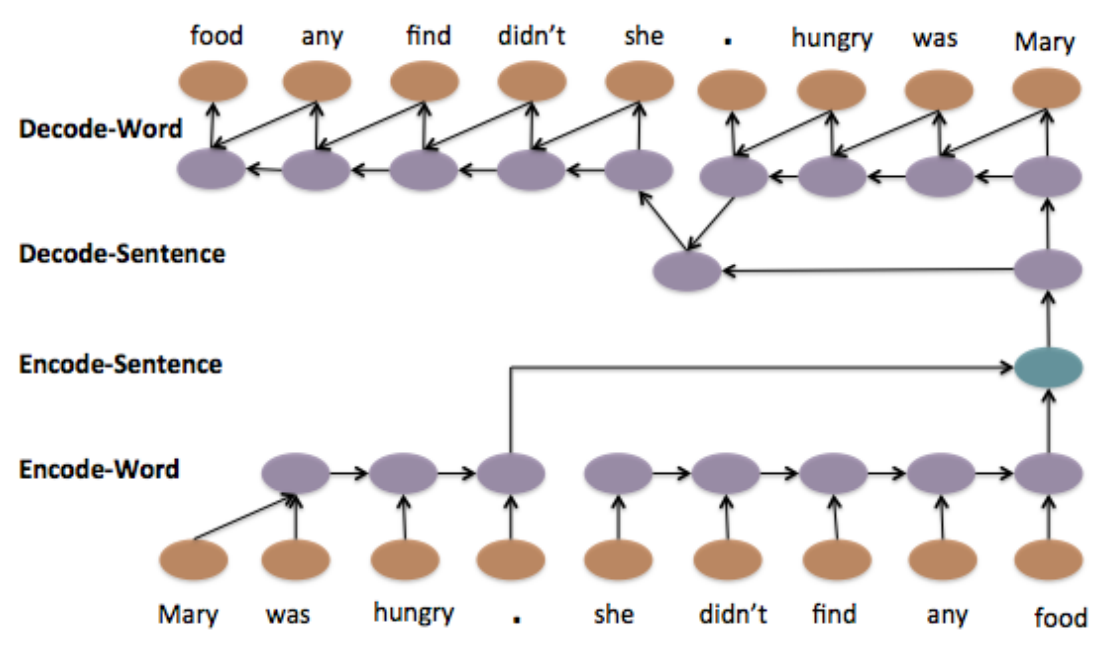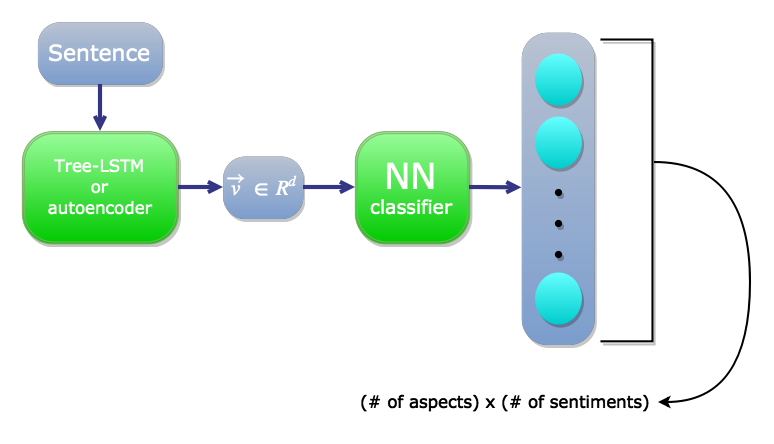Speech Project
Week 12 Report
b02901085 徐瑞陽
b02901054 方為
Paper Study
Hierarchical Neural Autoencoders
Introduction
LSTM captures local compositions (the way neighboring words are combined semantically and syntatically
Words{\rightarrow}Sentence
Words→Sentence
Sentence\ encoder{\rightarrow}Paragraph\ encoder
Sentence encoder→Paragraph encoder
Paragraph Autoencoder Models
Model 1: Standard LSTM

Model 2: Hierarchical LSTM

Model 3: Hierarchical LSTM with Attention

Evaluation - Summarization
- ROUGE: recall-oriented score
- BLEU: precision-oriented score

Task 5:
Aspect Based Sentiment Analysis (ABSA)
Subtask 1: Sentence-level ABSA
Given a review text about a target entity (laptop, restaurant, etc.),
identify the following information:
-
Slot 1: Aspect Category
- ex. ''It is extremely portable and easily connects to WIFI at the library and elsewhere''
----->{LAPTOP#PORTABILITY}, {LAPTOP#CONNECTIVITY}
- ex. ''It is extremely portable and easily connects to WIFI at the library and elsewhere''
-
Slot 2: Opinion Target Expression (OTE)
- an expression used in the given text to refer to the reviewed E#A
- ex. ''The fajitas were delicious, but expensive''
----->{FOOD#QUALITY, “fajitas”}, {FOOD#PRICES, “fajitas”}
-
Slot 3: Sentiment Polarity
- label: (positive, negative, or neutral)
Subtask 2: Text-level ABSA
Given a set of customer reviews about a target entity (ex. a restaurant), identify a set of {aspect, polarity} tuples that summarize the opinions expressed in each review.
Subtask 3: Out-of-domain ABSA
Test system in a previously unseen domain (hotel reviews in SemEval 2015) for which no training data was made available. The gold annotations for Slots 1 and 2 were provided and the teams had to return the sentiment polarity values (Slot 3).
Our Framework
Framework 1

Encode by Tree-LSTM or autoencoder
Framework 2
End-to-end MemNN

Problem we encountered
SpeechProject-week12
By Wei Fang
SpeechProject-week12
- 748



